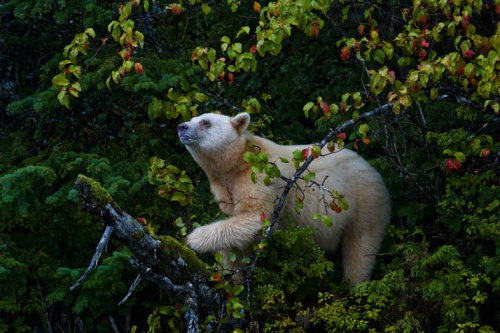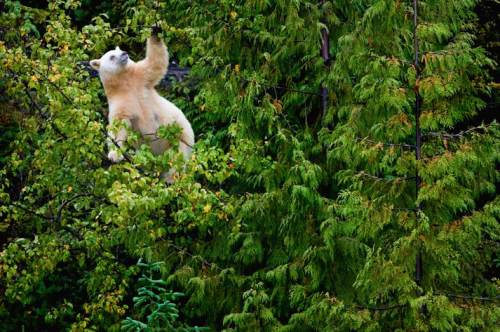How Is Biotechnology Preparing Us To Live On The Moon And Mars?
How is Biotechnology Preparing us to Live on the Moon and Mars?
The adventures awaiting astronauts on future long-duration missions have technologists researching sustainable ways to live away from Earth. We’re using what we know from almost 20 years of a continuous human presence on the International Space Station and looking at new technologies to prepare for extended stays on the Moon and Mars.

Biotechnology – technology that uses living organisms to make products that provide a new use – is key to this research.
With biotechnology, we’re developing new ways to manufacture medicines, build habitats and more in space. Here are some ways biotechnology is advancing spaceflight and how the same research is reaping benefits on Earth.

Healthy astronauts
Planning ways to supply food for a multi-year mission on the Moon or Mars may require making food and nutrients in space. Our scientists are testing an early version of a potential solution: get microorganisms to produce vital nutrients like those usually found in vegetables. Then, whenever they’re needed, astronauts can drink them down.
The microorganisms are genetically engineered to rapidly produce controlled quantities of essential nutrients. Because the microorganisms and their food source both have a long shelf-life at room temperature and only need water to be activated, the system provides a simple, practical way to produce essential nutrients on-demand. The same kind of system designed for space could also help provide nutrition for people in remote areas of our planet.
Our researchers are evaluating the first batches of BioNutrient samples that came back to Earth after an experimental run on the International Space Station.

Because space travel takes a toll on the human body, we’re also researching how biotechnology can be used to advance the field of regenerative medicine.
Related cells that are joined together are collectively referred to as tissue, and these cells work together as organs to accomplish specific functions in the human body. Blood vessels around the cells vascularize, providing nutrients to the tissue to keep it healthy.
Our Vascular Tissue Challenge offers a $500,000 prize to be divided among the first three teams that successfully create thick, metabolically-functional human vascularized organ tissue in a controlled laboratory environment. The vascularized, thick-tissue models resulting from this challenge will function as organ analogs, or models, that can be used to study deep space environmental effects, such as radiation, and to develop strategies to minimize the damage to healthy cells.
Plant factories
Humans have relied on plants’ medicinal qualities for thousands of years for everything from alleviating minor ailments to curing serious diseases. Now, researchers are trying to simplify the process of turning plants into medicine (i.e. how to make it compact and portable). If successful, the cost of biomanufacturing pharmaceuticals on Earth could go down, and plants could produce medicines in space.

Creating medicine on demand isn’t something we typically do, so we’re turning to experts in the field for help. Researchers at the University of California, Davis are transforming plants into mini-medicine factories for future Mars missions. They’re genetically altering an ordinary type of lettuce so that it produces a protein called parathyroid hormone. This hormone is an approved drug for treating osteoporosis, a common condition where bones become weak and brittle.

This type of research is vital to long duration spaceflight. When astronauts land on Mars, they’ll need to be strong—ready to explore. The length of the flight in zero gravity to get there and lower gravity on the surface could have a negative impact on human bones. Having the technologies needed to treat that possibility, and other unanticipated health effects of long duration spaceflight, is crucial.
Growing habitats
Vitamins aren’t the only thing astronauts could be growing on Mars; we’re exploring technologies that could grow structures out of fungi.
An early-stage research project underway at our Ames Research Center is prototyping technologies that could “grow” habitats on the Moon, Mars and beyond out of life – specifically, fungi and the unseen underground threads that make up the main part of the fungus. These tiny threads build complex structures with extreme precision, networking out into larger structures like mushrooms. With the right conditions, they can be coaxed into making new structures – ranging from a material similar to leather to the building blocks for a planetary home.
The myco-architecture project envisions a future where astronauts can construct a habitat out of the lightweight fungi material. Upon arrival, by unfolding a basic structure made up of dormant fungi and simply adding water, the fungi would grow around that framework into a fully functional human habitat – all while being safely contained to avoid contaminating the external environment.

Recycling waste
Once astronauts arrive on the surface of the Moon or a more distant planet, they’ll have to carefully manage garbage. This waste includes some stuff that gets flushed on Earth.
Today, we’re already using a recycling system on the space station to turn urine into drinking water. Poop on the other hand is contained then disposed of on spacecraft returning to Earth. That won’t be possible on more distant journeys, so, we’re turning to biomanufacturing for a practical solution.
Biology can serve as an effective recycling factory. Microorganisms such as yeast and algae feed on all kinds of things classified as “mission waste.” Processing their preferred form of nourishment generates products that can serve as raw materials used to make essential supplies like nutrients, medicines, plastic and fuel.

By taking a careful look at biological processes, we hope to develop new, lightweight systems to leverage that biology to do some helpful in-space manufacturing.
From Space to Earth
Biotechnology is preparing us for longer space missions to the Moon and then Mars – farther from Earth than humans have ever traveled before. As we prepare for those exciting missions, we’re also conducting research on the space station for the primary benefit of everyone on Earth.
January is National Biotechnology Month. To learn more about some of the ways NASA is using biotechnology to solve challenges in space and improve life on Earth, visit this link.
Make sure to follow us on Tumblr for your regular dose of space: http://nasa.tumblr.com
More Posts from Rocks-everywhere and Others
Astronaut readjusts to life back on Earth
> Don’t give him a baby for a while.
it is starting to bloom outside!!! smell like earth and worms!! the grass is tall and awake!!! flowers are here and scattered everywhere!!! it’s raining and humid and fresh!!! i know i say this every other day!!! i love!!! spring!!!

Wren




The Titanoboa, is a 48ft long snake dating from around 60-58million years ago. It had a rib cage 2ft wide, allowing it to eat whole crocodiles, and surrounding the ribcage were muscles so powerful that it could crush a rhino. Titanoboa was so big it couldn’t even spend long amounts of time on land, because the force of gravity acting on it would cause it to suffocate under its own weight.

Rime-rimmed rocks
Looking a bit like white moss, these cairn stones on Mountbenger Law in Scotland (at an elevation of 543 m) are covered in a special type of ice known as rime.
Keep reading
what was the name of the fish my geology teacher called “bad dude” because i put bad dude in my notes and have no idea what the real name is










the great bear rainforest in british columbia is one of the largest coastal temperate rain forests in the world, with twenty five thousand square miles of mist shrouded fjords and densely forested islands that are home to white furred black bears.
neither albino nor polar bear, these rare black bears (there are fewer than five hundred) are known as kermode bears, or what the gitga’at first nation call mooksgm’ol, the spirit bear — a word they did not speak to european fur traders lest the bears be discovered and hunted. to this day, it remains taboo to hunt a spirit bear, or to mention them to outsiders.
the white fur in these bears is triggered by a recessive mutation of the same gene associated with red hair and fair skin in humans. though it remains unclear as to how the trait arose (or disappeared), it is especially pronounced on certain islands.
photos by (click pic) paul nicklen x, fabrice simon, denis binda, kyle breckenridge, and paul burwell
-
 very-stressed liked this · 2 years ago
very-stressed liked this · 2 years ago -
 ari999 liked this · 3 years ago
ari999 liked this · 3 years ago -
 secretlyshadowymoon reblogged this · 3 years ago
secretlyshadowymoon reblogged this · 3 years ago -
 secretlyshadowymoon liked this · 3 years ago
secretlyshadowymoon liked this · 3 years ago -
 annapia-03 reblogged this · 3 years ago
annapia-03 reblogged this · 3 years ago -
 annapia-03 liked this · 3 years ago
annapia-03 liked this · 3 years ago -
 cherry16663 liked this · 3 years ago
cherry16663 liked this · 3 years ago -
 carolina5760 liked this · 3 years ago
carolina5760 liked this · 3 years ago -
 annabellesacres reblogged this · 3 years ago
annabellesacres reblogged this · 3 years ago -
 matheusfandrade90120 liked this · 3 years ago
matheusfandrade90120 liked this · 3 years ago -
 theelectricginmachine reblogged this · 3 years ago
theelectricginmachine reblogged this · 3 years ago -
 rosesandstudying liked this · 3 years ago
rosesandstudying liked this · 3 years ago -
 defalternative reblogged this · 4 years ago
defalternative reblogged this · 4 years ago -
 kicsibilly reblogged this · 4 years ago
kicsibilly reblogged this · 4 years ago -
 nash01 liked this · 4 years ago
nash01 liked this · 4 years ago -
 wollstonecrafted liked this · 4 years ago
wollstonecrafted liked this · 4 years ago -
 nymphasuniverse liked this · 4 years ago
nymphasuniverse liked this · 4 years ago -
 windowshelves reblogged this · 4 years ago
windowshelves reblogged this · 4 years ago -
 fuzzycycleflower reblogged this · 4 years ago
fuzzycycleflower reblogged this · 4 years ago -
 fuzzycycleflower liked this · 4 years ago
fuzzycycleflower liked this · 4 years ago -
 elsreybebee liked this · 4 years ago
elsreybebee liked this · 4 years ago -
 alonelyhouse liked this · 4 years ago
alonelyhouse liked this · 4 years ago -
 defalternative reblogged this · 4 years ago
defalternative reblogged this · 4 years ago -
 unprettygurlduh liked this · 4 years ago
unprettygurlduh liked this · 4 years ago -
 actirasty liked this · 4 years ago
actirasty liked this · 4 years ago -
 minionloveskakashi liked this · 4 years ago
minionloveskakashi liked this · 4 years ago -
 bluenuitfm liked this · 4 years ago
bluenuitfm liked this · 4 years ago -
 nulled-silently liked this · 4 years ago
nulled-silently liked this · 4 years ago -
 motivationalkittyposter liked this · 4 years ago
motivationalkittyposter liked this · 4 years ago -
 redoceanwaves liked this · 4 years ago
redoceanwaves liked this · 4 years ago
225 posts
